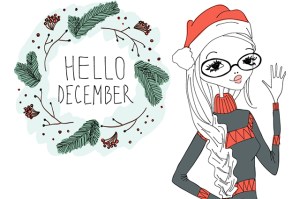Fall makes its presence known with a few definite signs and portents. Leaves change color from green to red and yellow, pumpkin spice lattes flow wherever coffee is sold, and temporary storefronts pop up to sell a colorful array of Halloween decor and costumes.
Now considered part and parcel of Halloween, the act of dressing up in costume dates back to the earliest records of the holiday. Long before Christianity spread throughout northern Europe, the pagan Celts of the British Isles and surrounding regions dressed in animal skins to disguise themselves from the spirits of the restless dead, who were believed to wander the Earth on Samhain (pronounced sow-in, meaning “summer’s end”). To appease the spirits, the Celts burned pyres and left sacrificial offerings to the dead, lest they remain to haunt their homes.
With the arrival of Catholicism to the British Isles, Samhain was rechristened All Hallows’ Eve (later shortened to Hallow-e’en), followed by All Saints’ Day on Nov. 1 and All Souls’ Day on Nov. 2. During this time, the poor went “souling” at the doors of more affluent neighbors, offering songs and prayers for the dead who awaited judgement in purgatory. These souls were represented by lanterns carved from turnips, each with a single candle lit inside it – an early precursor to the modern jack-o-lantern.

Halloween as we know it didn’t take hold in America until the mid to late 1800s, when Irish and Scottish immigrants introduced customs such as jack-o-lantern carving and “guising,” in which children dressed in masks to visit shops and neighbors, offering rhymes and songs in exchange for nuts and candies.
While these customs derived from the older Catholic tradition of souling, Halloween had grown increasingly secular by the time it reached American soil. By 1939, guising evolved into its modern incarnation, “trick-or-treating,” in part through efforts by civic and religious organizations to mitigate the more anarchic elements of the holiday. In the original premise, the treats were offered so that costumed children would refrain from playing tricks upon stingy adults.
Early Halloween costumes were often homemade. Popular women’s magazines in the late 1800s printed instructions for costume-making, while children later gathered old clothes from attics and closets and blackened their faces with burnt cork or soot.

Commercial costume companies started to appear around 1910. The garments were made from cotton or linen, with masks most often made of waxed and painted buckram – a stiff cotton-based fabric typically used for gauze and bookbinding – and sometimes cardboard.
The Dennison Manufacturing Company in Massachusetts produced simple paper costumes, while Collegeville Costumes in Pennsylvania made clown and jester outfits using scraps of fabric left over from making flags. The Ben Cooper Company, based out of Brooklyn, N.Y., took off making costumes and sets for theatrical productions before going into the Halloween business, and later joined with another New York-based company, A.S. Fishbach, which held rights for Disney characters such as Donald Duck and Mickey Mouse.
With the commercialization of Halloween costumes, a variety of characters from the popular culture of the time, such as Little Orphan Annie, appeared alongside the traditional witches and ghosts. Starting in the 1950s, vacuum-formed plastic masks and rayon fabric costumes replaced the rougher materials of the previous era, giving Halloween a neon bright and kitschy aesthetic which can still be seen today.

Although classic goblins, ghosts, and witches inspired some of the earliest Halloween costumes, it was not until the 1970s and 1980s that the holiday’s association with cinematic horror became truly established.
In 1988, the most popularly purchased Halloween costume character was Freddy Krueger, the dream-stalking slasher villain of the “Nightmare on Elm Street” movies, followed by Jason Voorhees of “Friday the 13th” fame, and television horror hostess, Elvira. Less frightening costume choices (depending on your point of view) included commercial mascots such as Spuds MacKenzie and the California Raisins, wisecracking sitcom puppet Alf, and even televangelists Jim and Tammy Bakker.
Halloween is seeing a renaissance of popularity among adults today, especially millennials who grew up with fond memories of trick-or-treating in the ’80s and ’90s. For many, Halloween costumes provide a sense of deep nostalgia and of liberation from the daily normal, so that wearing them may be as ritually sacred now as it was for the ancient Celts.
Leave a comment below telling us about your favorite Halloween costume memory.
2 Thoughts on “The Somewhat-Haunting History of Halloween Costumes”
Leave A Comment
Comments are subject to moderation and may or may not be published at the editor’s discretion. Only comments that are relevant to the article and add value to the Your AAA community will be considered. Comments may be edited for clarity and length.
















My favorite costume memory is of a contest at our church Halloween party. As an aspiring artist, costumes were an opportunity to create. At this one party, I used green cloth, makeup and styrofoam to craft a Martian outfit. I could barely walk in it. First Prize!
This is an excellent article full of fun and interesting facts. So glad I am a member of AAA